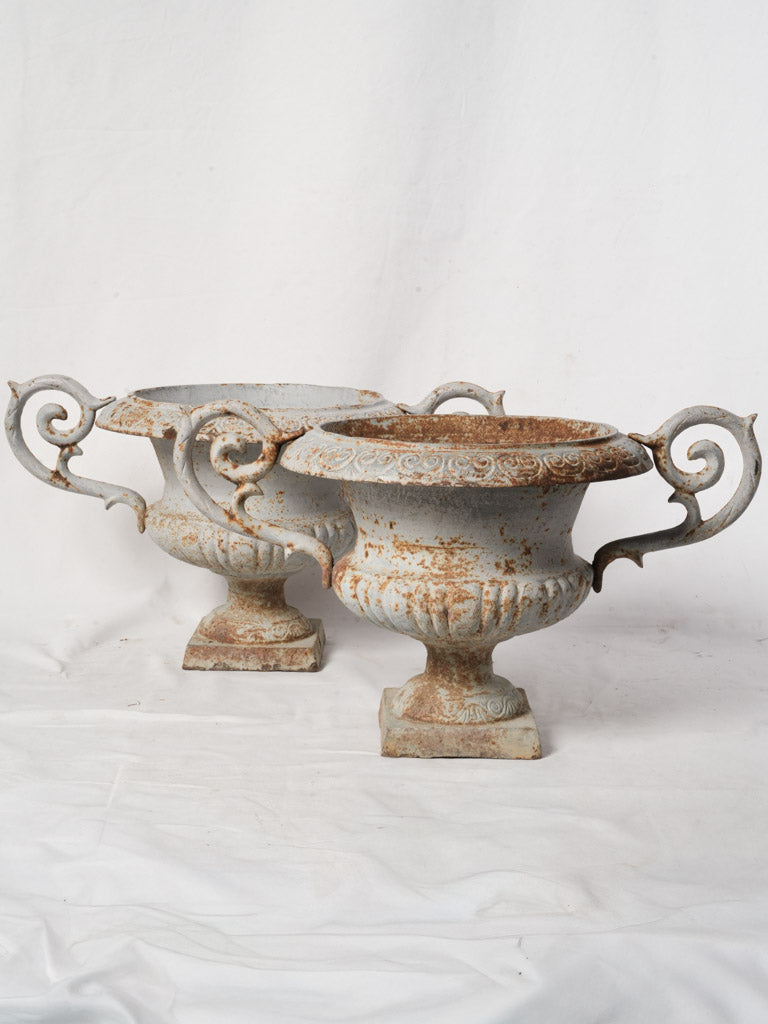
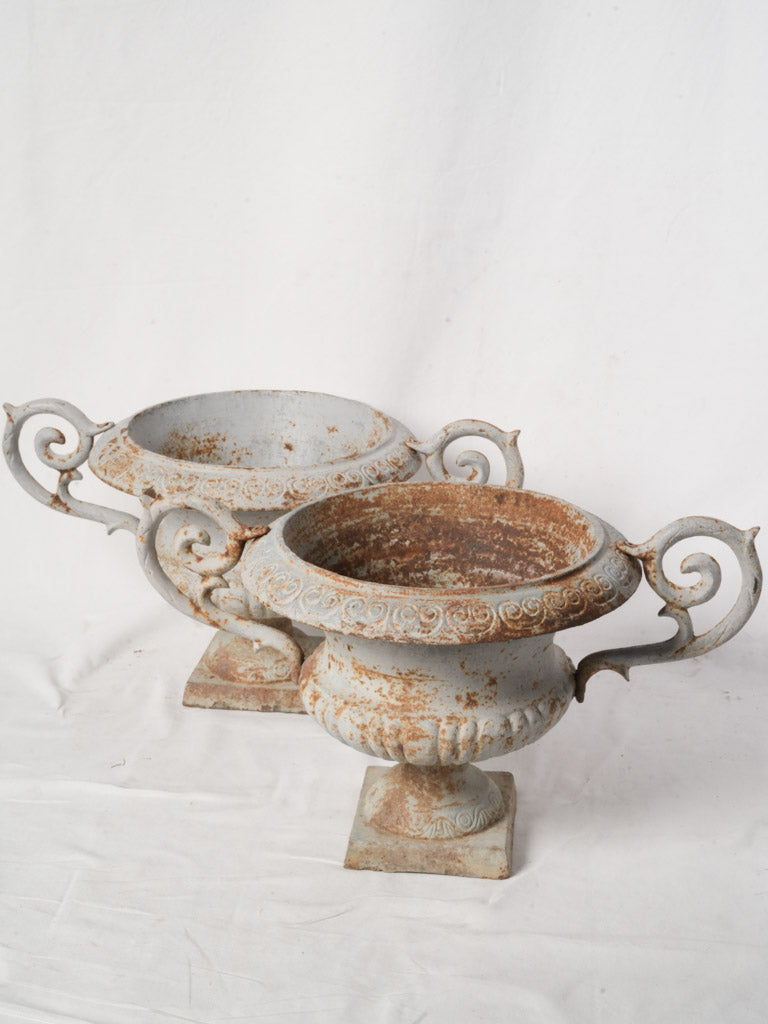
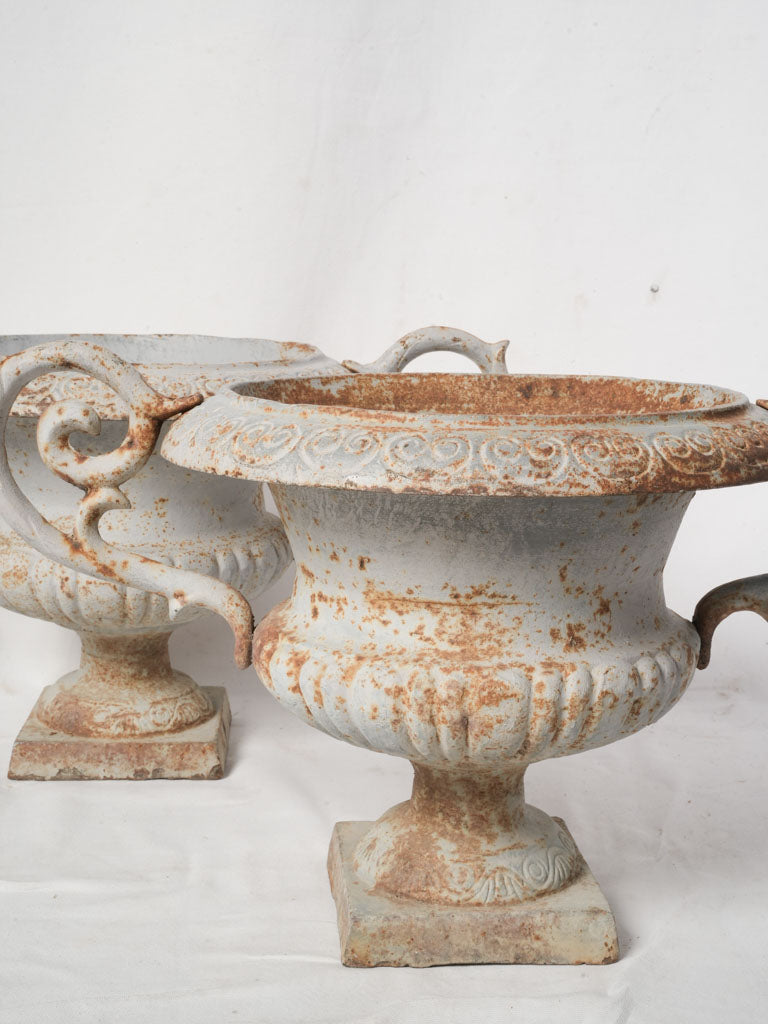
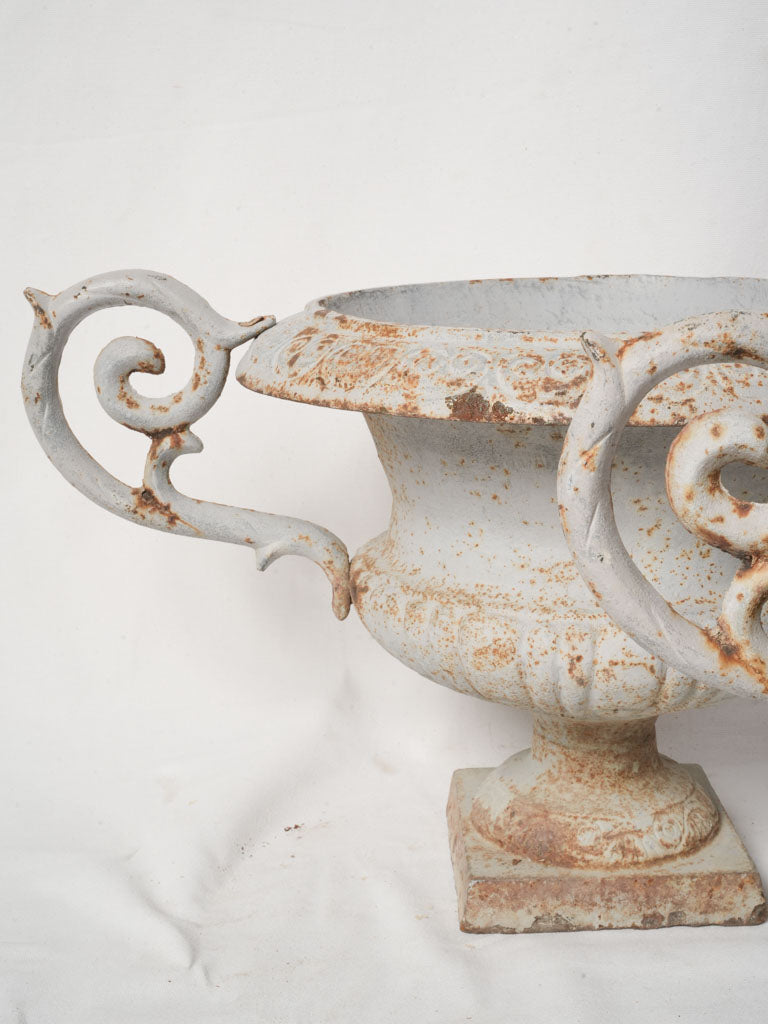
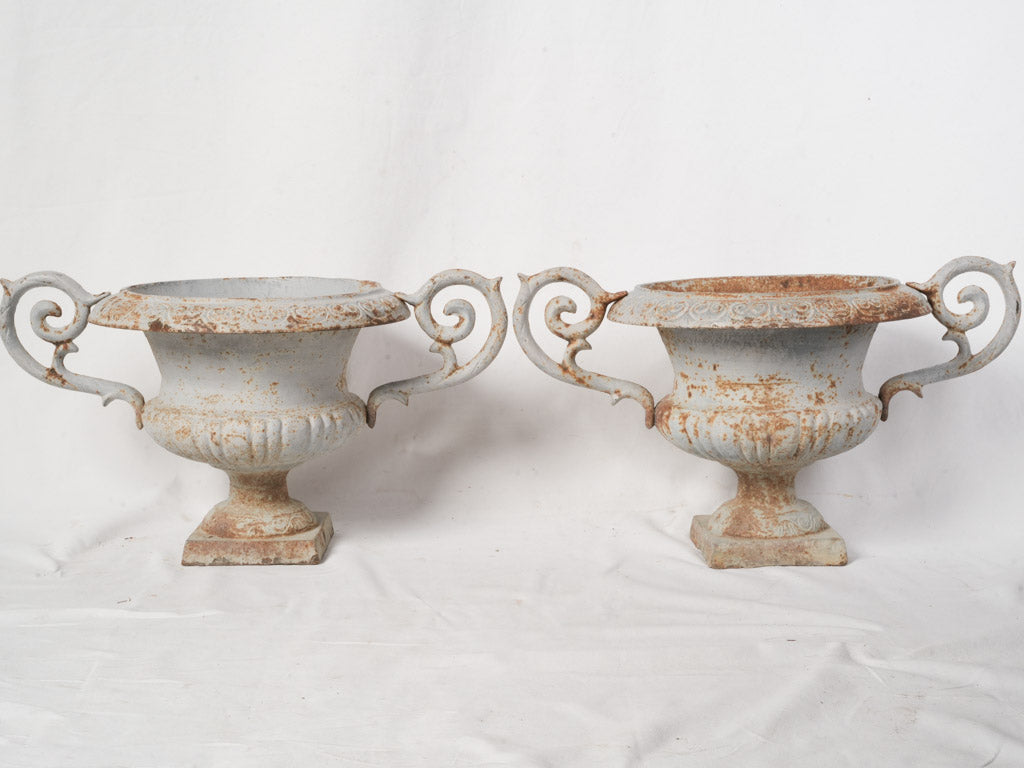
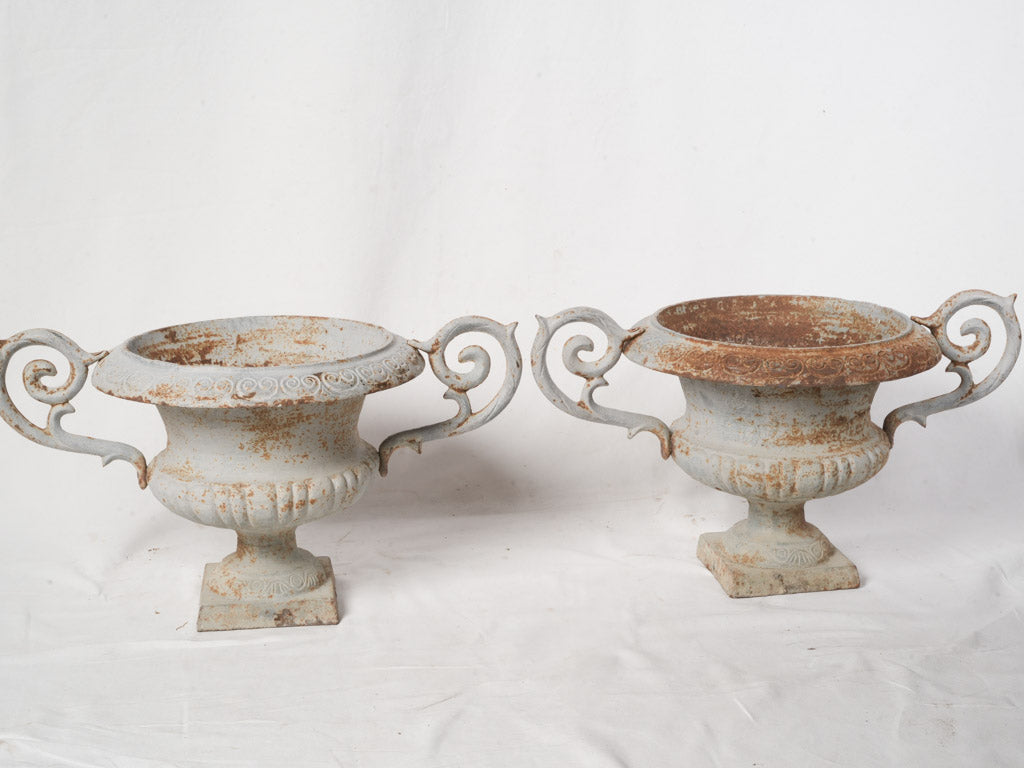
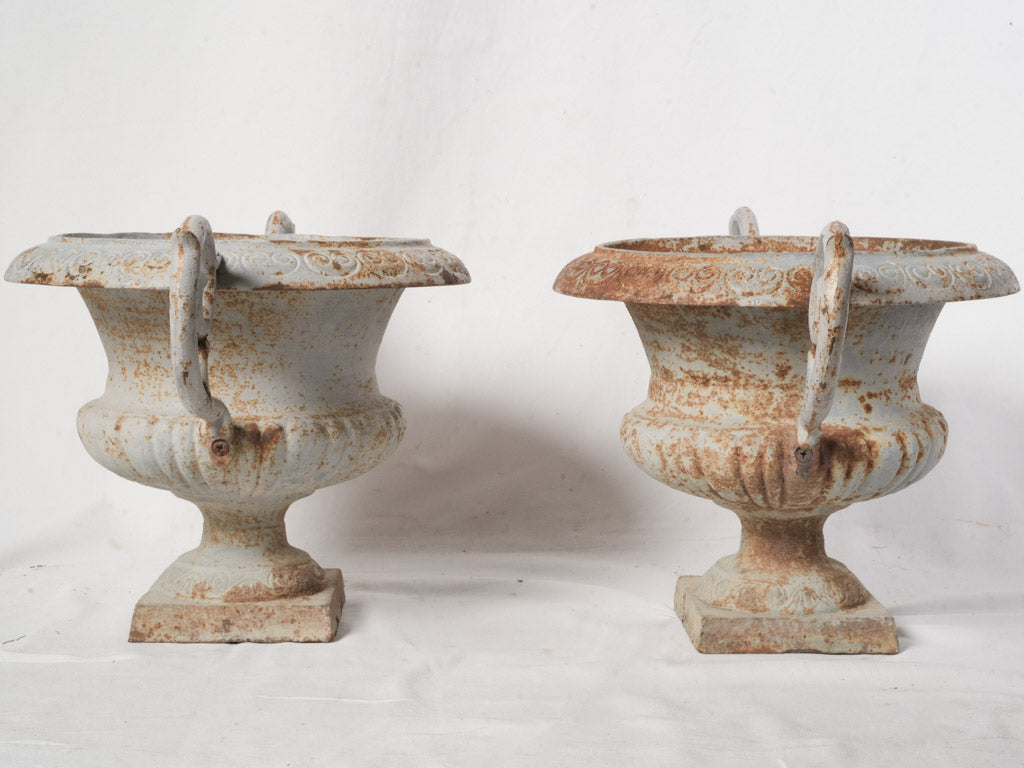
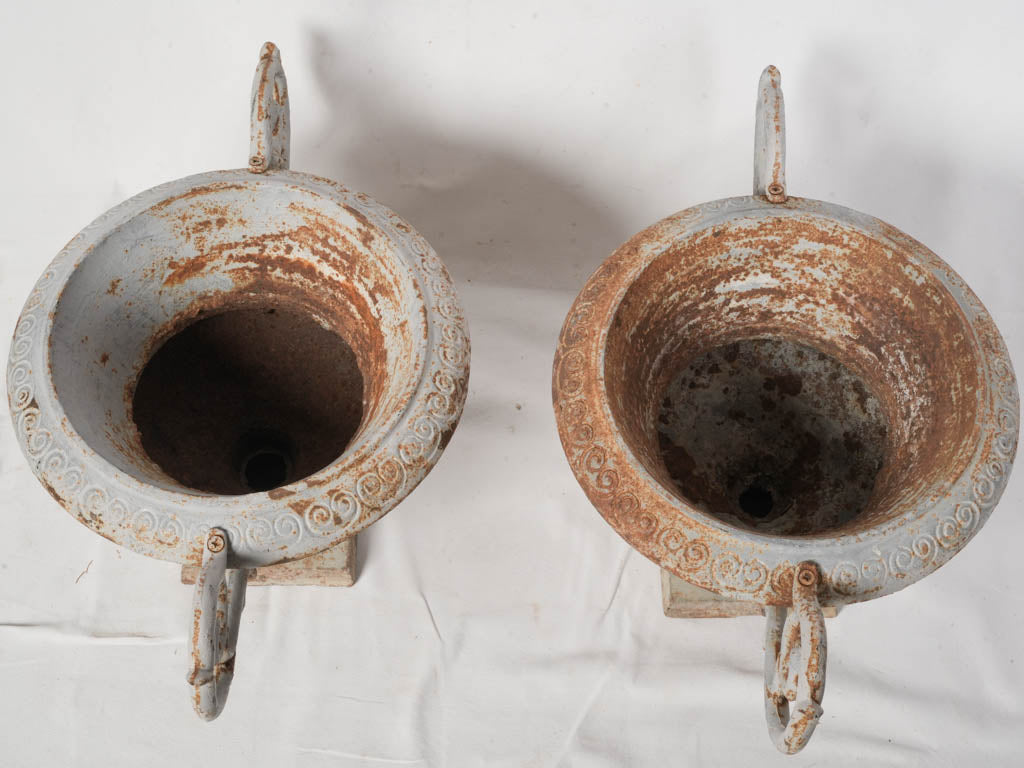
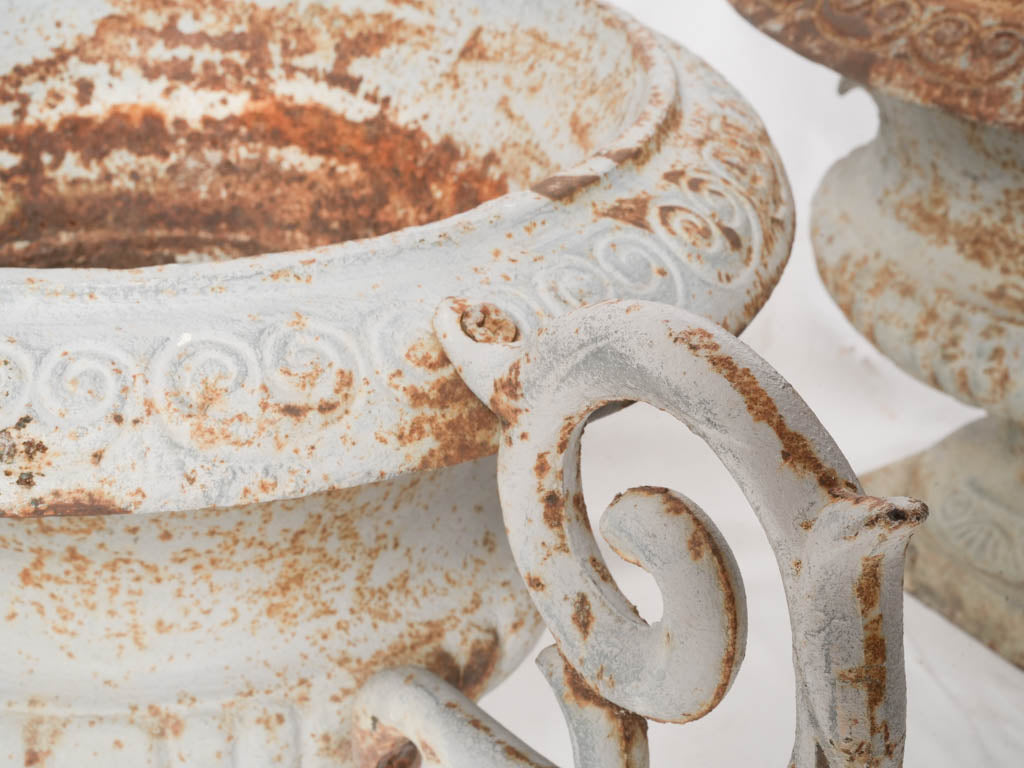
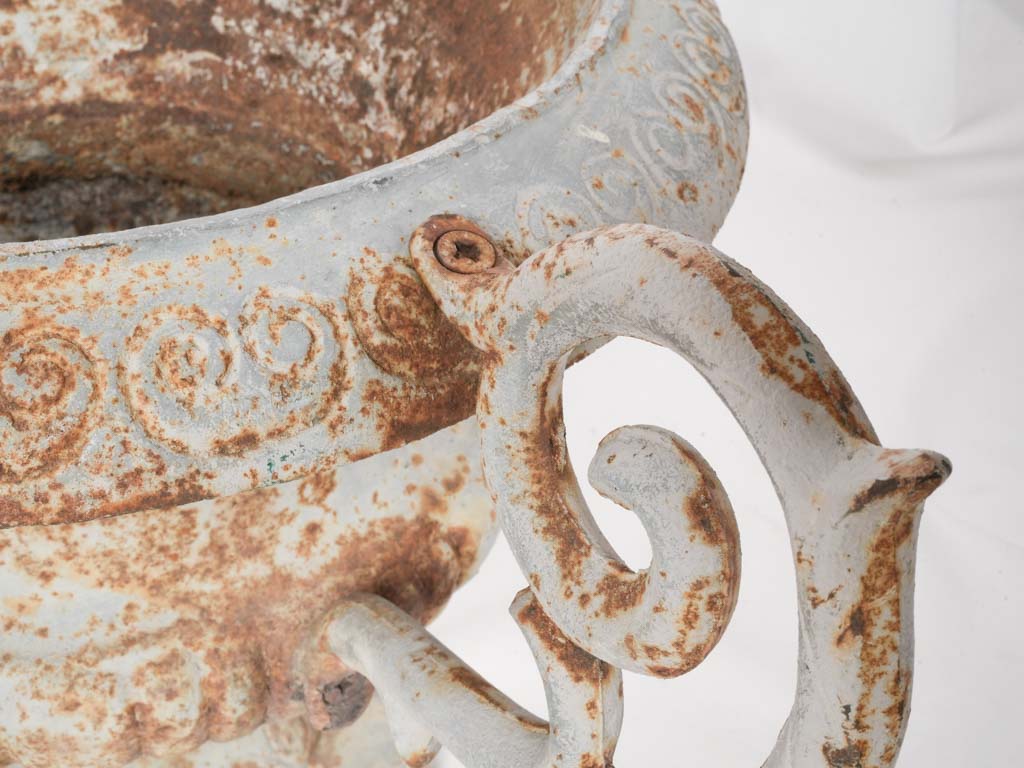
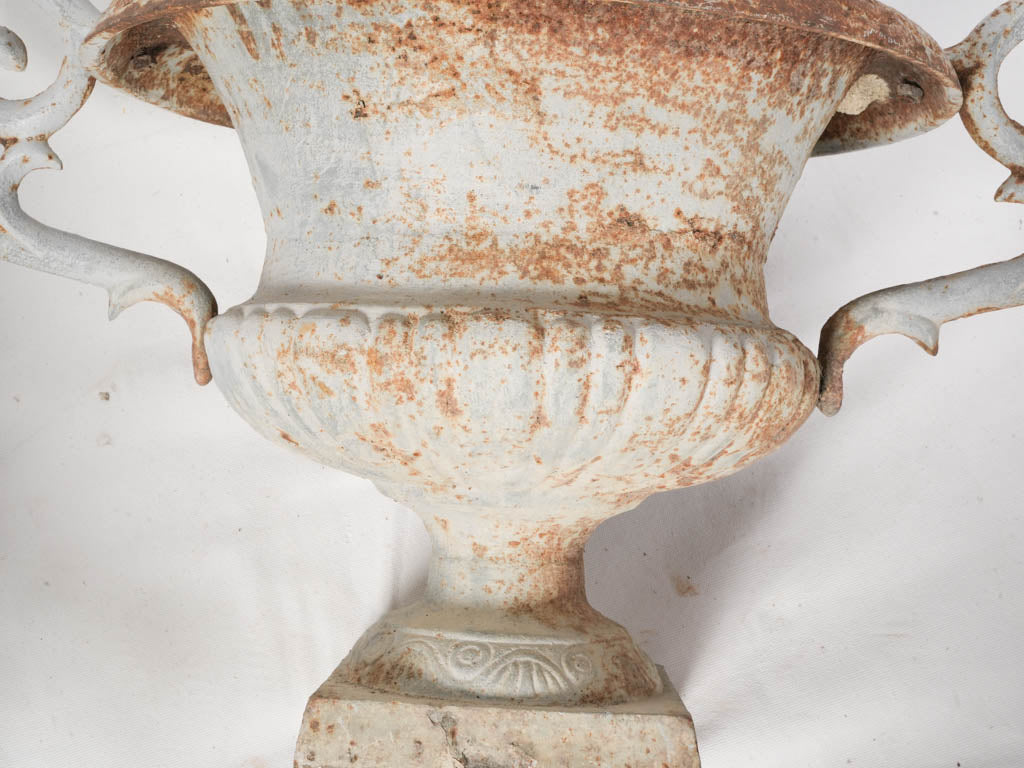
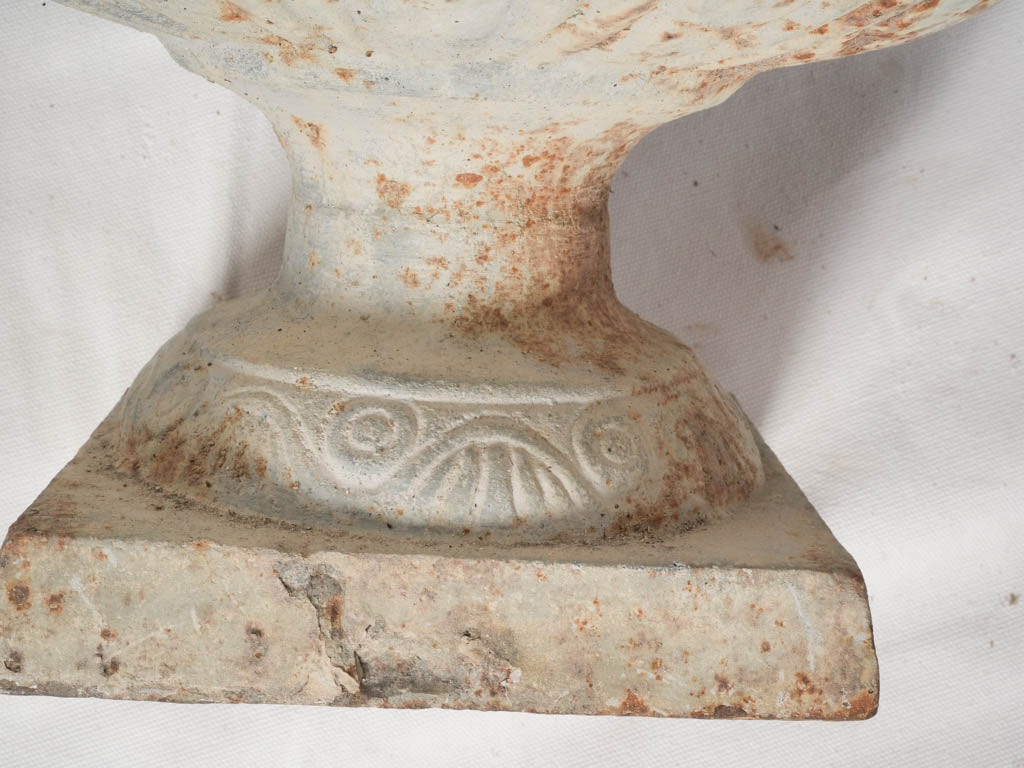
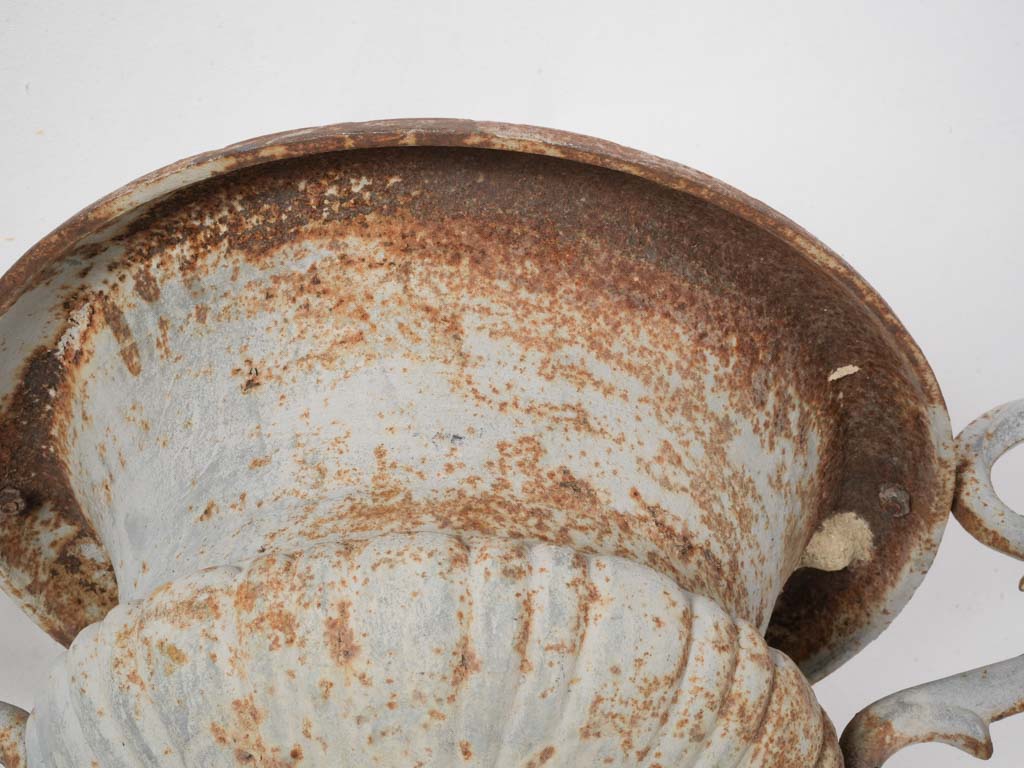
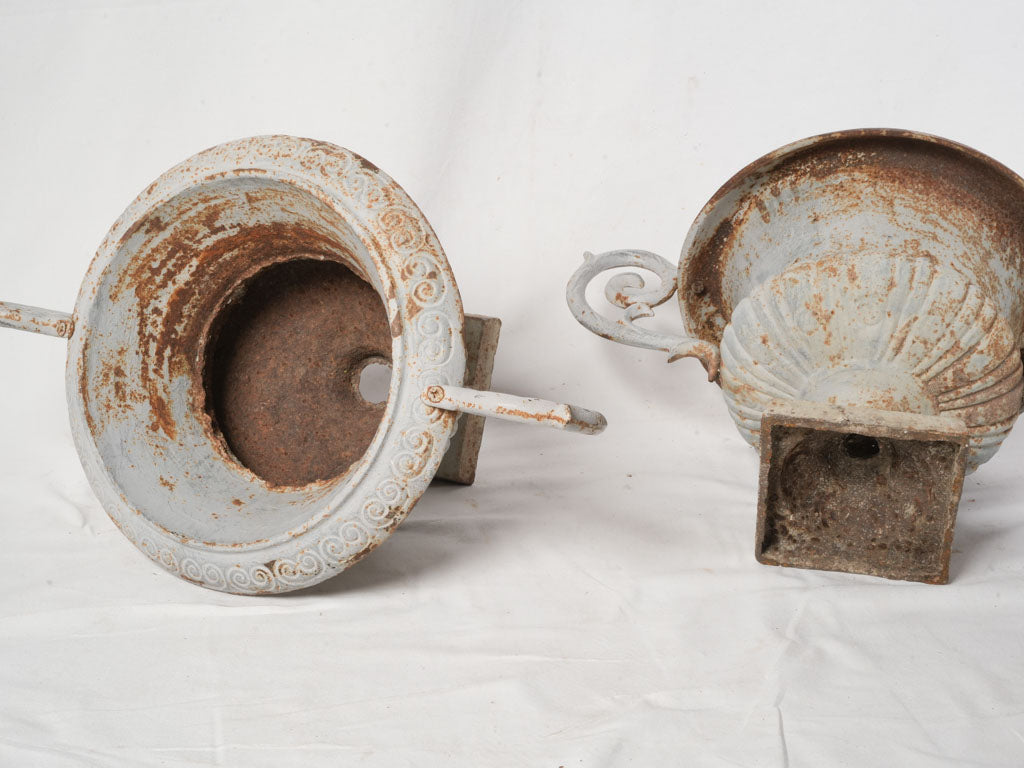
Important Pair of Late 19th-Century French Cast Iron Chambord Campana Garden Urns - 17"
All inclusive pricing to USA
The price includes duties, taxes, tariffs and shipping. No more to pay for destinations within the US.
A substantial pair of late 19th-century French cast-iron garden urns in the so-called Chambord form, finished in a soft blue-gray paint that has mellowed to a handsome, timeworn surface. Each campana-shaped urn presents a rolled lip cast with a running scroll, bold double-volute handles, a fluted lower body, and a waisted support on a square plinth. The scale is generous and sculptural. Condition is weathered and timeworn, with layered paint, areas of surface rust, and losses to the finish, the iron remaining solid and ready for use.
Cast-iron urns of this type flourished in France during the second half of the 19th century, when public parks and private gardens embraced classical ornament revived through industrial casting. The Chambord designation nods to the French Renaissance vocabulary seen at the Château de Chambord, here expressed through volutes, fluting, and a disciplined classical profile. Leading foundries supplied similar models, using sand-casting to achieve crisp detail, typically finished in paint to protect the metal and allow the patina to evolve gracefully outdoors.
As decorative anchors, this pair excels flanking an entry, framing garden steps, or punctuating a terrace on stone or brick plinths. Indoors, they lend character in a conservatory, sunroom, or loft, used as planters with liners, as cachepots for topiary, or simply as sculptural vessels on a console. The blue-gray paint and honest weathering suit classical, rustic, or pared-back contemporary schemes, adding depth and a quietly grand presence.
Condition and patina consistent with age.
Each measures approx. 17" high x 29½" wide x 19¼" deep
Each measures approx. 43cm high x 75cm wide x 49cm deep
Choose options

